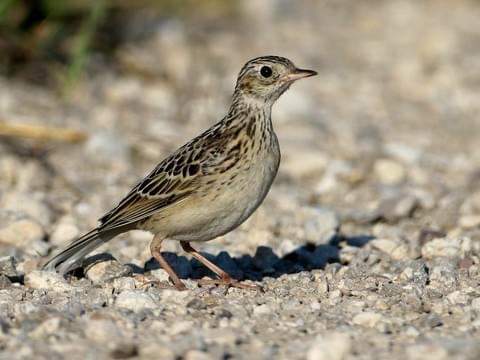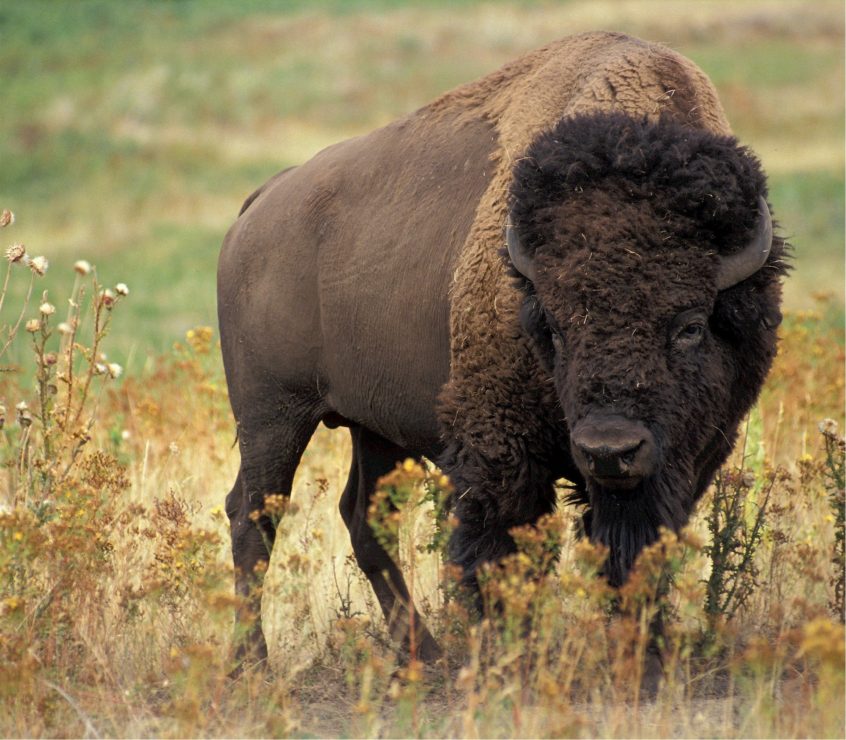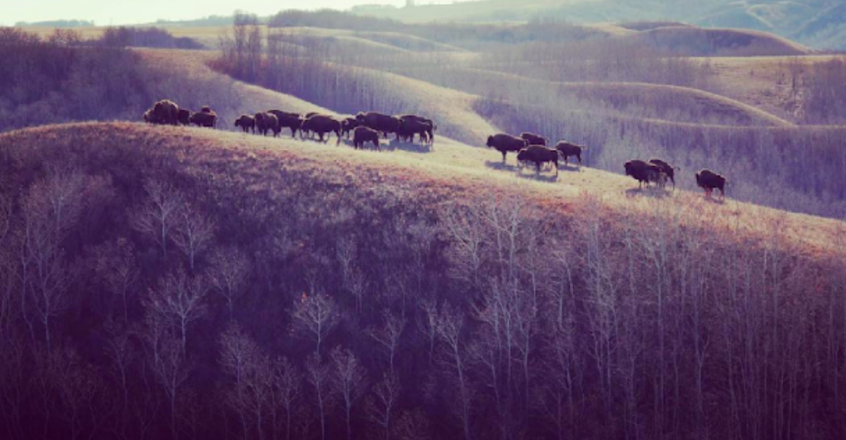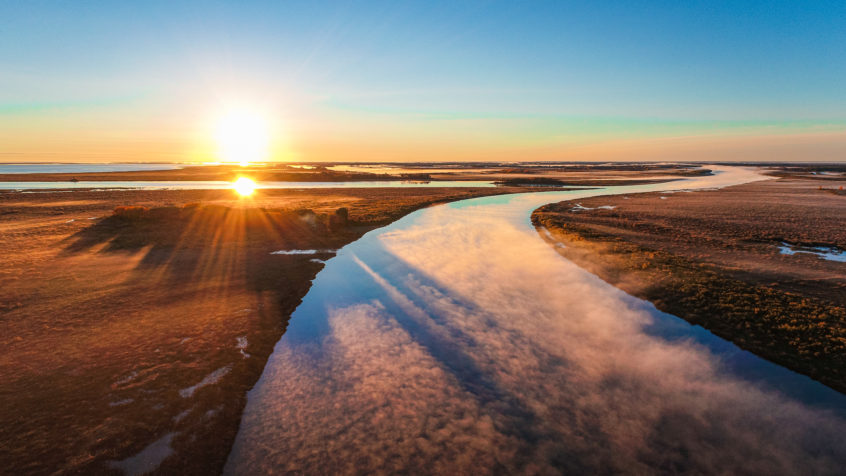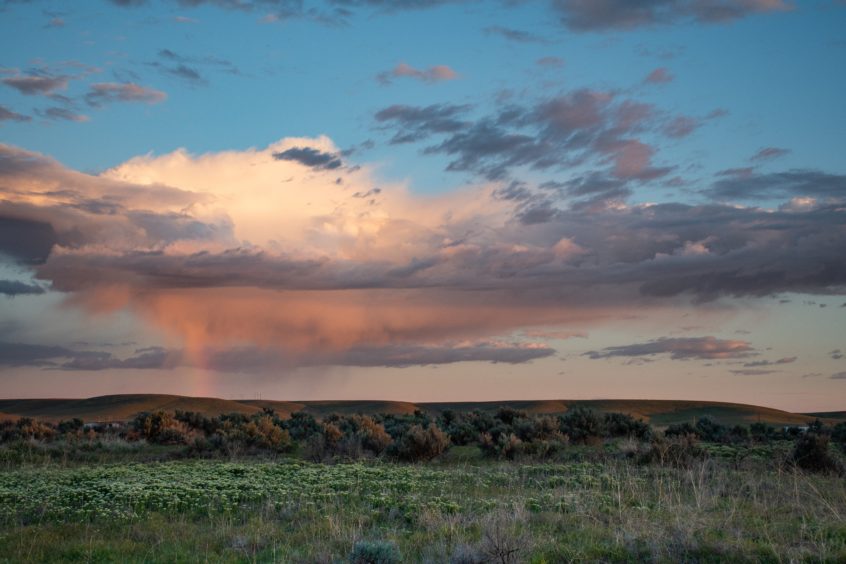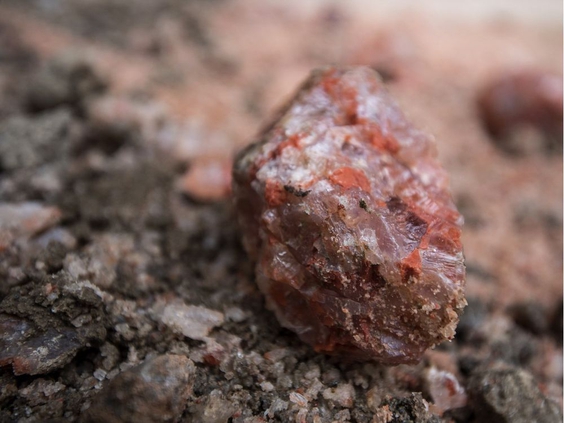Sprague’s Pipit is a medium-sized, ground-nesting bird that is rarely seen. It is usually only detected by its unique song, which is often described as a series of descending tinkling, ethereal notes. It is endemic to the prairies and listed as threatened under SARA.
Loggerhead Shrike (Prairie subspecies)
Loggerhead shrikes aren’t your typical songbird. They are fierce predators, and since they don’t have sharp talons to hold prey, they use sharp objects instead, like barbed wire fence and thorns on trees. They are listed as threatened under COSEWIC.
Plains Bison
Bison once roamed the Great Plains in vast herds that stretched miles long, and yet, years later, they were on the brink of extinction. Today, bison represent strength and resilience and are an important symbol of the prairies.
Greater Sage-Grouse
Occupying only 7% of their former range and experiencing major reductions in population, the Greater Sage-Grouse represents one of the most endangered species in Canada.
Swift Fox: A Reintroduction Success
Once extirpated from Canada in the 1930s, the Swift fox has slowly been recovering its population following reintroduction programs starting from 1983 in Alberta and Saskatchewan.
Carbon Sequestration
Carbon sequestration is an important global phenomenon that all forms of life depend on to keep a liveable climate. Here in Saskatchewan, is sequestered in mass amounts by the boreal forest, muskeg, grasslands, and permafrost.
Saskatchewan’s Flat Landscape: Our Biodiverse Grasslands
While Saskatchewan’s prairies were once a thriving wilderness roamed by millions of wild bison, much of it has been transformed, with less than 18% of the original native grassland remaining. With such a small amount of Saskatchewan’s irreplaceable native grasslands left, it is crucial to protect these important ecosystems.
A Deeper Look at the Saskatchewan River Basin
Before embarking on any project, especially one that will affect the whole province and beyond, it is important to consider the wide-spread, long-term impact of what we do. This involves not only considering the environmental impact, but also the social impact of our actions. In order to do so, we must first understand who and what is directly affected.
Celebrating the Conservation of 80,000 Hectares of Saskatchewan Grassland
Today saw an announcemnet of a formal land exchange that allows the federal and provincial governments to work together with local ranching communities to preserve Saskatchewan’s native grassland ecosystems.
Sask. environmental groups raise concerns about proposed CanPacific potash mine
Public Pastures – Public Interest (PPPI) put out a call to action April 1 in response to an Environmental Impact Assessment released by CanPacific Potash, … Read More
- Page 2 of 2
- 1
- 2

